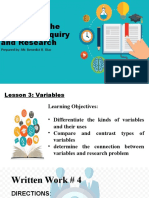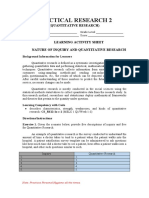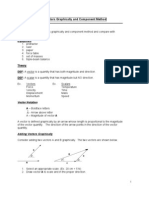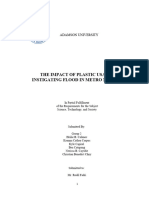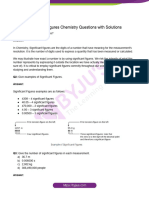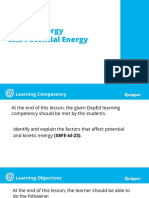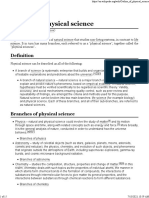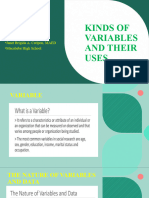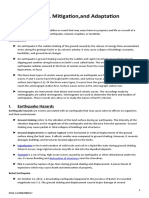0% found this document useful (0 votes)
291 views25 pages2 Classification of Variables
This document discusses the classification of variables in research. It defines a variable as anything that can vary due to circumstances and be measured in research. Variables are then classified as numeric, categorical, experimental, and non-experimental. Numeric variables can be continuous or discrete. Categorical variables can be ordinal, nominal, dichotomous, or polychotomous. Experimental variables include independent, dependent, and extraneous variables. Non-experimental variables are predictor and criterion variables. Variables are also classified as univariate, bivariate, or polyvariate based on the number studied. The document provides examples to illustrate each classification.
Uploaded by
Ma. Xynnah Rose R. HermosillaCopyright
© © All Rights Reserved
We take content rights seriously. If you suspect this is your content, claim it here.
Available Formats
Download as PPTX, PDF, TXT or read online on Scribd
0% found this document useful (0 votes)
291 views25 pages2 Classification of Variables
This document discusses the classification of variables in research. It defines a variable as anything that can vary due to circumstances and be measured in research. Variables are then classified as numeric, categorical, experimental, and non-experimental. Numeric variables can be continuous or discrete. Categorical variables can be ordinal, nominal, dichotomous, or polychotomous. Experimental variables include independent, dependent, and extraneous variables. Non-experimental variables are predictor and criterion variables. Variables are also classified as univariate, bivariate, or polyvariate based on the number studied. The document provides examples to illustrate each classification.
Uploaded by
Ma. Xynnah Rose R. HermosillaCopyright
© © All Rights Reserved
We take content rights seriously. If you suspect this is your content, claim it here.
Available Formats
Download as PPTX, PDF, TXT or read online on Scribd
/ 25





